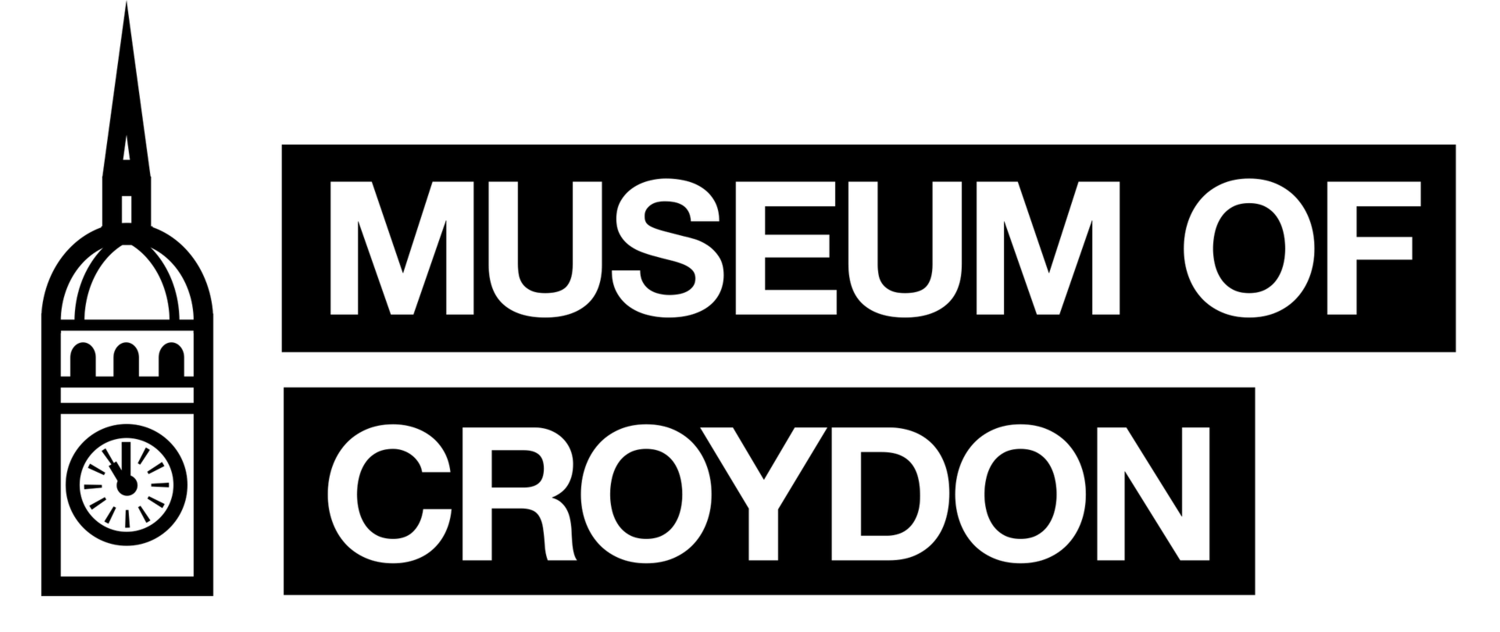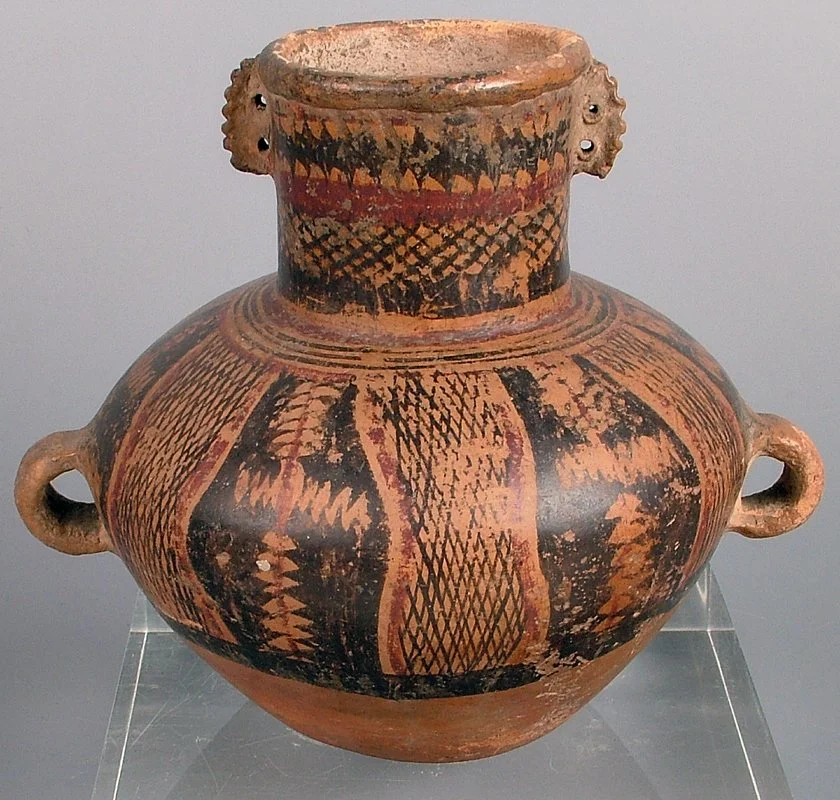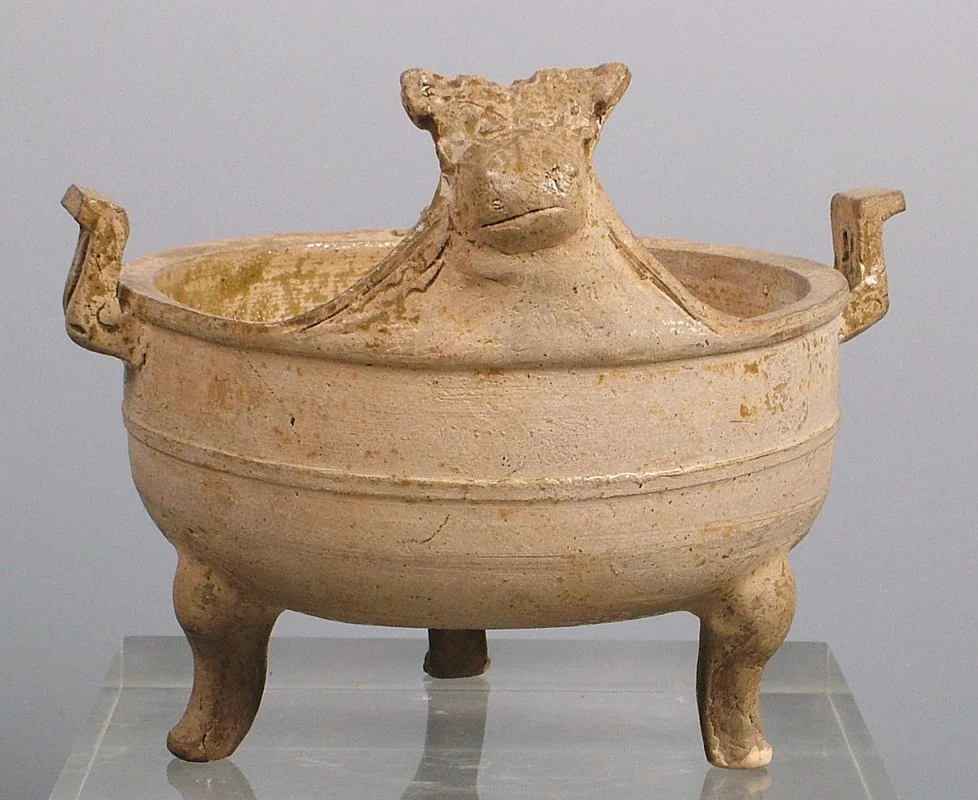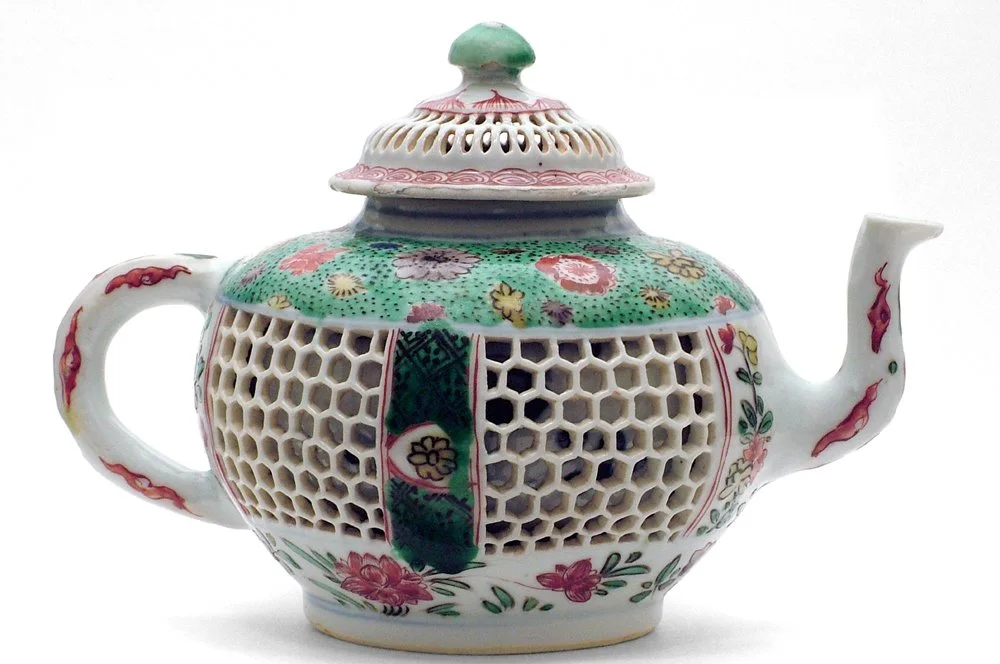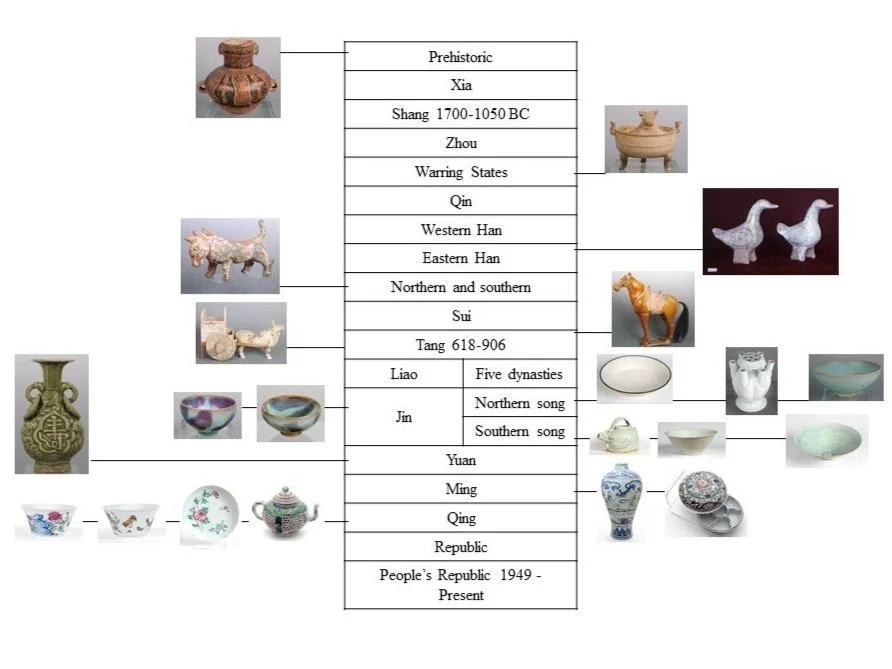
Collection
The Riesco Collection consists of over 200 items, dating from prehistory to the Qing dynasty (2500 BC to the 19th century). It includes porcelain, Chinese stoneware and earthenware, featuring mainly vessels and figures of the highest quality. Below are six highlights from the collection Selected to cover the longest period of time, they show range of use, style and design!
Earthenware Jar
This earthenware jar is the oldest object in the Riesco collection of Chinese pottery. Painted in red and black, this decorative jar is from the grave of a wealthy person from north west China. When it was buried it would have held grain or drink and the lid would have been made from cloth or cane. The lid may have been tied to the eyelets at the top of the neck to hold it down. Jars found in graves were often used in everyday life. This jar was made in about 2500 BC (in the Chinese Neolithic period).
It is a Banshan type jar, Yangshao culture, from Gansu province, north and northwest China. This pot was made by the coiling method, possibly using a primitive mat turntable, and its surface was burnished to give a dull gloss. The wave and net design on the jar is typical of Neolithic painted decoration in northwest China where, at that time, most communities settled near and were dependent on rivers and fish.
Purchased by Raymond Riesco at Bluett & Sons in 1950
(ref: M/1992/375)
Sacrificial dish
This three legged vessel was used for offering sacrifices of food and drink to the spirits of the dead in China. It dates from about 350 BC (the Chinese late Bronze Age, also known as the Warring States period).
The design of the dish is copied from bronze dishes called Tings ('Ting', 鼎 in Chinese character). These pottery copies were buried with people who could not afford bronze. The potter left tool marks and fingerprints when adding the legs. The rim is decorated with an animal's head and tail and the handles are in the shape of wings. The remains of a light brown glaze can be seen on the surface.
Purchased by Raymond Riesco at Bluett & Sons in 1949
(ref: M/1992/376)
Tomb Guardian Model
This Chinese model of an imaginary beast dates from 200 - 300 AD (during the Han dynasty). It was originally buried in a grave to ward off evil spirits and perhaps even human intruders. These tomb guardians were often shaped as fearsome mythical beasts, some with human faces.
Tomb guardians often came in pairs and were placed at the entrance of the tomb. They usually faced each other protecting the contents of the tomb from evil spirits.
Moulded earthenware body with horns and legs hand made and added on. There are traces of red and white paint. Similar models can be found at The Metropolitan Museum and the Ackland Art museum.
Purchased by Raymond Riesco at Bluett & Sons in 1952
(ref: M/1992/380)
Model of a Women
This earthenware model of a woman is part of a pair in the Riesco Collection. They were made in China between 700 and 800 AD (during the Tang dynasty).
This woman is a musician or a dancer and is fashionably dressed, with her hair styled in a double bun. The models seem to be clapping their hands for the purpose, presumably, to keep time and were probably part of a set of people playing instruments and dancing. Household orchestras of which these figures formed a part of, sometimes included a lute player, players of small drums or clappers, and occasionally one with a kind of flute.
These are models are tomb models, made to be buried in a grave. They were for the dead to use and gave them status, in the afterlife. They were made in a mould, then covered in slip before being fired. There are traces of red, brown and black paint.
Originally from the Sir W. Younger Collection. Purchased by Raymond Riesco in 1950.
(Ref: M/1992/394/1)
Lotus vase
This Chinese vase was made between 1000-1200 AD (during the Northern Song dynasty). Shaped like a lotus bud, it has six open ended spouts which is unusual. Normally this kind of vase has five spouts because in Chinese five spouted vase is a pun on an official of the fifth rank.
The lotus is a Buddhist symbol, symbolising enlightenment and purity. This vase would have likely been used in a Buddhist temple, where it could have held flowers or joss sticks (incense). It is made of porcelain and has a transparent glaze with an icy blue tinge. It was made in Jingdezhen in Jiangxi Province.
Purchased by Raymond Riesco in 1952. It was once exhibited at the Venice exhibition of Chinese art 1954.
(ref: M/1992/406)
Tea pot
Chinese porcelain tea pot made between 1662 and 1722 (during the reign of Emperor Kangxi, of the Qing dynasty).
It is decorated with flowers, painted in blue beneath the glaze and coloured with enamels over the glaze. This combination of enamel colours (green, yellow, purple, blue, red and sometimes brown or black) was developed in the Kangxi period (1662 - 1722) and is called famille verte. The tea pot is porcelain with underglaze blue, famille verte enamels and pierced decoration.
Purchased by Raymond Riesco from H. R. Hancock & Sons in 1954.
(ref: M/1992/497)
